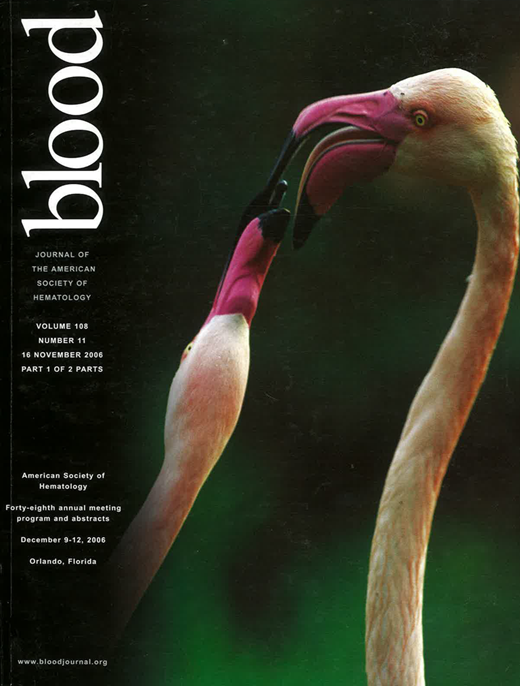Abstract
Invasive candidiasis (IC) and aspergillosis (IA), the most frequent IFI in leukemic patients, are associated with high morbidity and mortality. As early diagnosis of IFI is difficult, empirical antifungal therapy is recommended in persistently febrile neutropenic patients. This standard of care results in a broad use of antifungals. New non-invasive diagnostic tests such as circulating BGL, a fungal cell wall component, are thus needed to optimize management of patients with IFI. The objective of the current study was to evaluate the utility of monitoring BGL antigenemia in neutropenic patients at high risk for IFI. We conducted a prospective study of 189 episodes of neutropenia (median duration 22 days, range 7–113) following induction (n=107) or consolidation chemotherapy (n=82) in 99 consecutive patients with acute leukemia (85 AML, 14 ALL). Blood was collected 2× weekly before onset of fever and daily thereafter until resolution of fever. BGL was measured by colorimetric assay (Wako, Japan). Two cut-off values (5 or 11 pg/ml) were studied. A positive result was defined by 2 consecutive samples with BGL higher than the cut-off value. A median of 2 (0–4) febrile episodes occurred per neutropenic episode. Among 320 febrile episodes, 31 IFI were diagnosed according to EORTC-MSG criteria: 17 IC (4 proven, 13 probable) and 14 IA (5 proven, 9 probable). A median of 15 samples (4–47) per episode of neutropenia were analyzed over a median period of 34 days (19–121). The diagnostic performance of BGL was evaluated in patients with proven or probable IFI compared with febrile patients without IFI (Table). In patients with IC, the median time between onset of fever as first sign of IFI and BGL positivity (>= 5) was 0 (−3 to 17 days) as compared with 16 (0 to 51 days) until diagnosis of infection using conventional microbiological and imaging techniques (p=0.03). In IA patients, it was 3 (−9 to 14 days) vs. 7 (1 to 21 days) (p=0.07). In IC and IA, median peak BGL (21 [6–111] and 15 [7–51] pg/ml) occurred on day 13 (1 to 41) and on day 7 (3 to 20) after fever onset, respectively. Median time to initiation of antifungal therapy after fever onset was similar in IC (2.5, range: 1 to 10 days) and IA (5, range: 0 to 10 days). BGL antigenemia decreased or cleared in patients responding to therapy (n=19) and continued to increase (peak 111 and 66 pg/ml) in 2 cases of IC, in whom therapy failed. BGL was negative (< 5 pg/ml) in 100/102 episodes of bacteremia. In conclusion, monitoring of 1,3-beta-D-glucan antigenemia provides a new tool for early diagnosis and follow-up of IFI in neutropenic patients with acute leukemia.
Diagnostic Performance of BGL
| BGL Cut-off (pg/ml) . | 2 × 5 . | 2 × 5 . | 2 × 5 . | 2 × 11 . | 2 × 11 . | 2 × 11 . |
|---|---|---|---|---|---|---|
| Type of proven/probable IFI | IC | IA | All IFI | IC | IA | All IFI |
| Sensitivity % | 65 | 93 | 76 | 35 | 43 | 38 |
| Specificity % | 89 | 89 | 89 | 99 | 99 | 99 |
| PPV % | 48 | 52 | 65 | 86 | 86 | 92 |
| NPV % | 94 | 99 | 93 | 91 | 93 | 86 |
| Positive Likelihood Ratio | 5.9 | 8.5 | 6.9 | 35 | 43 | 38 |
| Negative Likelihood Ratio | 0.4 | 0.1 | 0.3 | 0.7 | 0.6 | 0.6 |
| BGL Cut-off (pg/ml) . | 2 × 5 . | 2 × 5 . | 2 × 5 . | 2 × 11 . | 2 × 11 . | 2 × 11 . |
|---|---|---|---|---|---|---|
| Type of proven/probable IFI | IC | IA | All IFI | IC | IA | All IFI |
| Sensitivity % | 65 | 93 | 76 | 35 | 43 | 38 |
| Specificity % | 89 | 89 | 89 | 99 | 99 | 99 |
| PPV % | 48 | 52 | 65 | 86 | 86 | 92 |
| NPV % | 94 | 99 | 93 | 91 | 93 | 86 |
| Positive Likelihood Ratio | 5.9 | 8.5 | 6.9 | 35 | 43 | 38 |
| Negative Likelihood Ratio | 0.4 | 0.1 | 0.3 | 0.7 | 0.6 | 0.6 |
Disclosures: Unrestricted research grant from Wako.
Author notes
Corresponding author

